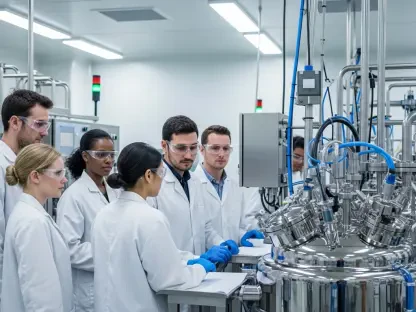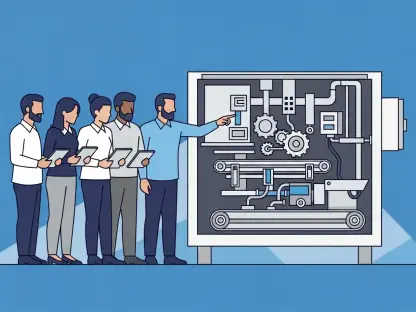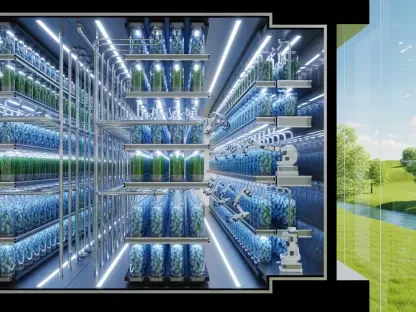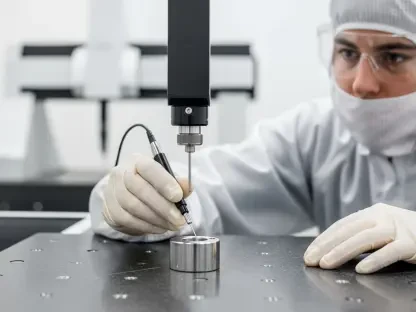In the fast-paced world of manufacturing, where innovation and efficiency are paramount, the ability to manage change effectively has become a defining factor for success. Every day, companies face the dual challenge of reducing operational costs while maintaining, or even enhancing, the quality of their products to meet stringent regulatory standards and customer expectations. Whether it’s a shift in production processes, the integration of new technology, or a response to supply chain disruptions, change is inevitable. However, without a structured approach, these changes can lead to costly recalls, regulatory penalties, and compromised product safety. This pressing reality underscores the critical role of change control—a systematic process that ensures modifications are implemented without jeopardizing quality. By exploring the transformative power of change control, it becomes clear that this discipline is not just a compliance requirement but a strategic asset that can elevate manufacturing excellence.
1. Understanding the Stakes of Unmanaged Change
The financial and operational consequences of poorly managed change in manufacturing are staggering, often resulting in significant setbacks for companies that fail to prioritize control systems. A single product recall can cost a manufacturer up to $600 million, while the medical device sector alone spends around $5 billion annually addressing such issues, as reported by industry analyses. Additionally, recent data reveals that 37% of pharmaceutical recalls are linked to impurities and contaminants, with another 28% tied to inadequate control measures. Class I recalls, which pose serious health risks, represent 14% of recall activities and impact approximately 400,000 units per incident. These numbers highlight the immense risks associated with neglecting proper change management protocols, as the fallout can extend beyond monetary loss to damage brand reputation and consumer trust.
Beyond the immediate financial burden, the broader implications of unmanaged change often manifest as long-term challenges for manufacturers striving to remain competitive in their fields. The cost of non-quality—those expenses incurred due to failures, defects, and recalls—far outweighs the investment required to establish robust change control systems. Implementing structured processes to oversee modifications offers a safeguard against these pitfalls, ensuring that quality remains uncompromised even amidst rapid operational shifts. The value of such systems becomes evident when considering that proactive management can prevent the cascading effects of quality failures, preserving not only budgets but also market standing in highly regulated industries.
2. Learning from Real-World Manufacturing Challenges
Insights from manufacturing mishaps provide critical lessons on the dangers of unvalidated changes, particularly in sectors where safety is non-negotiable, such as pharmaceuticals. A systematic review of drug change management reveals that alterations in formulation, if not thoroughly tested, can lead to dosing errors with potentially lethal consequences for patients. Such risks emphasize the need for rigorous validation processes before any modification is rolled out. In industries like pharmaceuticals, where even minor deviations can have significant impacts, the failure to control change effectively can jeopardize not just individual products but entire batches, leading to widespread health concerns and regulatory scrutiny.
A notable case from the past further illustrates the far-reaching effects of change control weaknesses, especially within supply chains, highlighting the critical need for robust oversight. In 2021, the U.K.’s Medicines and Healthcare products Regulatory Agency (MHRA) uncovered falsified sterilization records from a supplier, raising doubts about the adequacy of the process despite the devices being sterilized. This incident prompted warnings to 88 medical device manufacturers and mandated comprehensive risk assessments for affected products. It serves as a stark reminder that change control must extend beyond internal operations to include suppliers and partners, as vulnerabilities in any part of the chain can have a domino effect on quality and compliance across the board.
3. Core Strategies for Effective Change Management
Adopting proven methodologies is essential for managing change in manufacturing without compromising quality or safety, and one recommended approach can significantly aid in this process. Often termed the transfer and stabilize method, it involves relocating existing processes to a new setup before introducing any technological or operational enhancements. This strategy minimizes variables by isolating changes, ensuring simplicity during transitions and reducing the likelihood of unforeseen issues. Another effective tactic, the gradual transformation strategy, focuses on completing and validating each phase of change before moving to the next. By avoiding overlapping modifications, this method prevents the accumulation of risks that can arise from simultaneous rollouts, offering a more controlled path to implementation.
A fundamental principle underlies both approaches, yet it is frequently overlooked in the rush to meet deadlines: never alter more than one variable at a time. Despite the temptation to expedite timelines by bundling changes, this often leads to complications that could have been avoided with a more measured pace. Regulatory frameworks reinforce these strategies, with guidelines like EudraLex Volume 4 GMP Annex 15 defining change control as a regulated process for assessing impacts on validated systems. Similarly, ICH Q10 outlines a structured system for proposing, evaluating, and implementing changes, while FDA 21 CFR Part 211 mandates documented and approved procedures by quality control personnel across regulated sectors, ensuring accountability at every step.
4. Categorizing Changes for Better Oversight
Understanding the different types of changes in manufacturing is crucial for applying the right level of scrutiny and control to each modification. Planned changes often include minor adjustments with a low likelihood of impacting product quality, requiring only routine documentation and review. However, they can also encompass major alterations that are executed only after thorough analysis and verification to optimize processes temporarily. These planned modifications allow manufacturers to evaluate and refine operations systematically, ensuring that quality remains intact while testing new approaches or addressing specific needs within the production cycle.
In contrast, unplanned changes typically emerge from unexpected circumstances such as equipment failures, safety concerns, customer complaints, or procedural deviations, often demanding immediate attention. These changes can pose significant risks if not managed with precision, and given their unpredictable nature, they require robust contingency plans and rapid response mechanisms to mitigate potential impacts on product quality and safety. By distinguishing between planned and unplanned changes, manufacturers can tailor their control processes to the specific risks and requirements of each scenario, ensuring that no alteration, regardless of its origin, undermines the integrity of the final product.
5. Essential Features of Robust Change Control Systems
Effective change control systems are built on clear categorization to ensure appropriate review and approval processes for every modification, allowing organizations to manage resources efficiently. Changes are typically classified as minor, with minimal risk to quality and requiring standard documentation; major, necessitating in-depth analysis and validation before implementation; and critical, which carry significant potential to affect quality, safety, or efficacy and demand extensive review. This structured classification enables organizations to allocate resources efficiently, focusing intensive oversight on high-risk changes while streamlining processes for those with lower impact, thereby maintaining a balance between thoroughness and operational agility.
Another cornerstone of successful change control lies in the establishment of cross-functional oversight teams composed of experts from quality assurance, manufacturing operations, regulatory affairs, risk management, IT, process engineering, and supply chain management. These committees ensure that diverse perspectives are considered during the evaluation of changes, minimizing blind spots and enhancing decision-making. Additionally, systematic documentation and monitoring are vital, requiring detailed records of change descriptions, risk assessments, implementation timelines, success criteria, and contingency plans. Such meticulous tracking not only ensures compliance with regulatory standards but also provides a clear audit trail for continuous improvement and accountability.
6. Harnessing Technology for Enhanced Change Control
The integration of technology is revolutionizing change control capabilities, offering tools that significantly enhance efficiency and foresight in manufacturing. Quality management software is experiencing rapid growth, with projections estimating a compound annual growth rate of nearly 13% from 2025 to 2030. These digital solutions provide predictive analytics powered by machine learning, enabling manufacturers to anticipate potential issues before they arise. By analyzing historical process data, such tools support proactive rather than reactive management, allowing companies to address risks early and maintain consistent quality across production cycles.
Beyond prediction, technology streamlines other critical aspects of change control through features like automated reporting, which ensures consistency and reduces administrative burdens for quality teams. Real-time oversight capabilities act as early warning systems, identifying deviations before they impact customers, while enhanced tracking functionalities offer complete traceability of changes throughout their lifecycle. This traceability simplifies root cause analysis and fosters continuous improvement by providing clear insights into the effects of each modification. As digital tools become more sophisticated, their role in transforming change control from a compliance necessity into a strategic advantage becomes increasingly evident, empowering manufacturers to navigate complex changes with confidence.
7. Evaluating Success Through Performance Metrics
To gauge the effectiveness of change control initiatives, organizations must track specific key performance indicators (KPIs) that reflect both process efficiency and quality outcomes, ensuring a comprehensive evaluation of their strategies. These metrics include implementation precision, measuring whether changes are executed without deviations; approval duration, tracking the time from request to approved implementation; and quality cost metrics, comparing the expenses of quality-related activities against the costs of non-quality. Additionally, deviation frequency during change phases and cycle duration—from initiation to validation of results—offer valuable insights into the smoothness and speed of change management processes, highlighting areas for optimization.
Monitoring these KPIs provides a comprehensive view of how well change control systems are functioning, allowing manufacturers to identify bottlenecks and inefficiencies promptly. For instance, a high deviation rate might indicate inadequate planning or training, while prolonged approval cycles could suggest overly complex review processes. By regularly analyzing these indicators, companies can make data-driven adjustments to their change control frameworks, ensuring that they not only meet regulatory requirements but also drive operational excellence. This focus on measurable outcomes transforms change management into a quantifiable asset, directly linking systematic control to improved quality and reduced risk across manufacturing operations.
8. A Structured Three-Stage Implementation Plan
Implementing change control effectively requires a phased approach that builds a strong foundation before introducing advanced capabilities. The first stage focuses on establishing digital infrastructure through cloud-based quality management systems. These systems provide standardized workflows, document control, and core reporting tools, creating a reliable backbone for systematic change management. By prioritizing digital foundations, manufacturers ensure that all subsequent modifications are supported by a consistent and accessible framework, reducing the likelihood of errors and enhancing collaboration across teams during transitions.
The second stage advances to smart analytics, integrating AI-driven risk assessment systems that predict potential outcomes of proposed changes by comparing them to historical data. This predictive capability enhances decision-making, allowing for more informed and strategic planning. The third stage, automated intelligence integration, incorporates full AI automation for change evaluation, including automated risk scoring, suggested mitigation strategies, and optimal action sequencing. Together, these stages create a comprehensive implementation plan that evolves from basic digitization to intelligent automation, equipping manufacturers with the tools to manage change with precision while preparing for future complexities and innovations in the industry.
9. Cultivating a Culture of Change Control Excellence
While technology plays a pivotal role, the success of change control also hinges on fostering a supportive organizational culture that prioritizes quality and accountability. Comprehensive training programs are essential, ensuring that employees at all levels understand not only the procedures but also the underlying principles of change control. Incorporating real-world case studies into these sessions helps contextualize the importance of systematic management, reinforcing the direct link between controlled changes and product safety. Such initiatives empower staff to approach modifications with a quality-first mindset, embedding change control as a core value within the company.
Equally important is the promotion of proactive risk identification, encouraging teams to flag potential issues early before they escalate into significant problems. This forward-thinking approach must be balanced with a commitment to thoughtfulness over speed, streamlining processes to avoid unnecessary delays without sacrificing thoroughness. Emphasizing a “right the first time” philosophy ensures that quality is not compromised in the pursuit of efficiency. By nurturing a culture that values both vigilance and precision, manufacturers can create an environment where change control is not seen as a burden but as a vital component of operational success and long-term sustainability.
10. Adhering to Global Standards and Best Practices
For manufacturers operating across multiple jurisdictions, aligning with international standards is crucial to navigating diverse regulatory requirements while maintaining consistent quality. The International Council for Harmonisation offers globally recognized guidance for regulated industries, providing a framework for harmonized change control practices. Similarly, ISO 9001 outlines universal quality management principles applicable across sectors, ensuring that change processes meet a baseline of excellence. Industry-specific standards further tailor these guidelines to unique applications, offering detailed insights for specialized manufacturing environments.
Adherence to these standards not only facilitates compliance but also fosters trust with stakeholders by demonstrating a commitment to quality and safety on a global scale. By integrating best practices into change control systems, companies can streamline cross-border operations, reducing the risk of regulatory conflicts and enhancing market access. This alignment also positions manufacturers to adapt more readily to evolving industry expectations, as international guidelines often reflect the latest advancements and consensus on quality management. In a competitive landscape, leveraging these standards becomes a strategic tool for ensuring that change is managed with both precision and global relevance.
11. Anticipating Future Trends and Implications
The landscape of change control is evolving rapidly, driven by market growth and technological advancements that promise to reshape manufacturing quality. Projections indicate that the medtech market could reach $886.68 billion by 2032, while the pharmaceutical sector is expected to grow to $1.45 trillion by 2029. Concurrently, the pharmaceutical AI market is forecasted to expand from $1.94 billion in 2025 to $16.49 billion by 2034, with 95% of companies in this space investing in AI capabilities. These trends signal a shift toward greater reliance on intelligent automation, with significant implications for how change is managed across industries.
Regulatory bodies are also adapting, as evidenced by recent FDA guidance in 2024 on advanced manufacturing technologies and predetermined change control plans for medical devices, which streamline modernization efforts. Additionally, the increasing digitization of supply chains necessitates that change control systems account for supplier-related impacts on quality. As these developments unfold, manufacturers must stay ahead by integrating AI and digital tools into their processes while remaining vigilant about emerging regulatory frameworks. The ability to anticipate and adapt to these trends will determine how effectively change control can safeguard quality in an increasingly complex and interconnected manufacturing environment.
12. Unlocking Business Value Through Change Control
Effective change control delivers measurable business benefits that extend far beyond mere compliance, positioning companies for sustained success. By reducing the likelihood of quality failures, recalls, and regulatory complaints, robust change management minimizes risk and protects both financial and reputational assets. It also provides a competitive edge, enabling organizations to implement beneficial modifications more quickly and predictably than rivals who lack mature systems. This agility is particularly valuable in dynamic markets where speed to market can define leadership and profitability.
Moreover, controlled change ensures adherence to relevant regulations, preventing penalties and maintaining market access, while enhancing operational efficiency by streamlining processes and reducing waste. Perhaps most notably, a formalized change control framework supports innovation by offering a stable platform for experimentation and the adoption of new ideas without compromising quality. These combined advantages transform change control into a strategic driver of business value, aligning quality management with broader organizational goals. Manufacturers that prioritize these systems are better equipped to navigate challenges, seize opportunities, and build resilience in a landscape defined by constant evolution.
13. Reflecting on the Path to Quality Excellence
Looking back, the journey of quality management in manufacturing revealed a landscape shaped by intricate supply chain dynamics, rapid technological progress, and shifting market demands. Effective change control emerged as a distinguishing factor, separating organizations that thrived from those that grappled with persistent disruptions. The disciplined application of systematic processes proved instrumental in navigating these complexities, ensuring that modifications did not undermine the integrity of products or operations, even under intense pressure to innovate or cut costs.
As a forward-looking step, manufacturers should continue to blend established change control practices with cutting-edge digital tools and AI capabilities to address current challenges while laying the groundwork for future growth. Investing in these systems yields substantial returns by fostering operational excellence, enhancing innovation capacity, and securing a competitive advantage. Moving ahead, the focus should be on refining these competencies to balance the need for rapid adaptation with the rigor of structured management, ensuring that enduring product quality and customer satisfaction remain at the heart of every change initiative.









